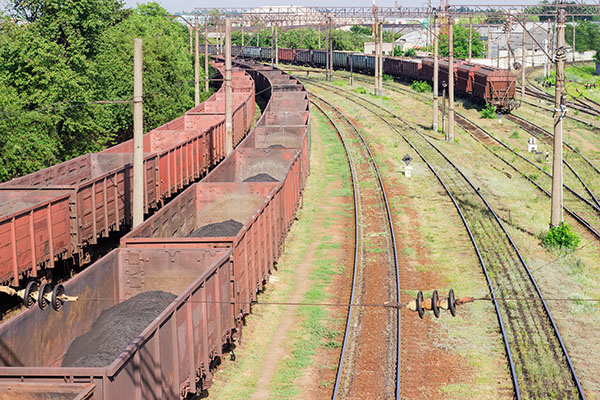FRA data shows strong progress with PTC implementation
The United States Department of Transportation’s Federal Railroad Administration (FRA) recently released data for second quarter 2018 Positive Train Control (PTC) implementation.

The United States Department of Transportation’s Federal Railroad Administration (FRA) recently released data for second quarter 2018 Positive Train Control (PTC) implementation.
Based on FRA’s data, a key takeaway is that decent progress is being made, with 15 U.S. railroads having installed 100% of PTC system hardware that needs to be installed for implementation. This data is based on a review of PTC implementation plans made by railroads, as well as their quarterly progress reports for the second quarter. FRA added that 12 other railroads are at 95%-to-99% installation of PTC system hardware that is identified in their PTC implementation plans. These gains are especially notable when compared to December 2016, when freight railroads had PTC active on 16% of required tracks, with passenger railroads at 24%, according to FRA.
“The railroads have achieved some significant improvements over the past year implementing this safety technology,” said FRA Administrator Ronald L. Batory in a statement. “While we are seeing progress among a majority of railroads, we want to see everyone meet their requirements.”
Railroads are required by law to have PTC installed by December 31, 2018, which is past the original deadline of December 31, 2015, which the Association of American Railroads said was arbitrary and unworkable and riddled with technical and legal complexities, as well as railroads and freight rail shippers stressing there would be serious consequences for the nation if the deadline was not extended.
The objective of PTC systems is to prevent train-to-train collisions, overspeed derailments, and incursions into roadway work limits. PTC sends and receives a continuous stream of data transmitted by wireless signals about the location, speed, and direction of trains, according to the Federal Railroad Administration (FRA). PTC systems, added the FRA, utilize advanced technologies including digital radio links, global positioning systems and wayside computer control systems that aid dispatchers and train crews in safely managing train movements.
A mandate for PTC systems was included in House and Senate legislation- The Rail Safety and Improvement Act of 2008. The legislation was passed after a September 12, 2008 collision between a freight train and a commuter train in Los Angeles. PTC has received renewed attention, following a tragic Amrtak accident in the Philadelphia area in 2015. As per the mandate, the December 31, 2015 deadline required freight railroads to install Positive Train Control (PTC) technology on 40 percent of its network.
Based on FRA data, the pace of implementation for PTC among Class I railroads remains a work in progress based on various metrics, including: locomotives equipped, track segments completed, radio towers installed, training completed, route miles in PTC operation; PTC safety plan; and spectrum.
In that same order below is FRA’s PTC update for Class I railroads:
- BNSF, 100% of locomotives equipped, 100% of track segments completed, 100% of radio towers installed, 100% of employee training completed; 100% of route miles in PTC operation; and spectrum is available;
- CSX, 100% of locomotives equipped, 65% of track segments completed, 96% of radio towers installed, 98% of employee training completed; 61% of route miles in PTC operation; and spectrum is available;
- Kansas City Southern, 98% of locomotives equipped, 100% of track segments completed, 100% of radio towers installed, 99% of employee training completed; 64% of route miles in PTC operation; and spectrum is available;
- Norfolk Southern, 96% of locomotives equipped, 83% of track segments completed, 98% of radio towers installed, 98% of employee training completed; 52% of route miles in PTC operation; and spectrum is available;
- Canadian Pacific, 80% of locomotives equipped, 83% of track segments completed, 94% of radio towers installed, 98% of employee training completed; 38% of route miles in PTC operation; and spectrum is available;
- Union Pacific, 84% of locomotives equipped, 98% of track segments completed, 100% of radio towers installed, 96% of employee training completed; 68% of route miles in PTC operation; and spectrum is available; and
- Canadian National, 91% of locomotives equipped, 74% of track segments completed, 99% of radio towers installed, 100% of employee training completed; 0% of route miles in PTC operation; and spectrum is available
In late 2017, Department of Transportation Secretary Elaine Chao penned a letter to Class I railroads, as well as passenger railroads and state and local transportation agencies, regarding the PTC mandate.
In her letter, Chao said that her letter was a reminder to the railroads to emphasize that at the end of this year they are required to achieve certain Congressionally-mandated milestones related to the implementation of PTC and are taking all possible measures to ensure it will meet all requirements specified by Congress by the December 31 deadline.
“The coming year is filled with an agenda of rail safety-oriented initiatives, and among the most important is advancing the implementation of Positive Train Control,” wrote Chao. “This particular initiative must be executed within the regulatory timelines as extended by Congress. Upon review of the latest data provided by the industry, we are concerned that many of the Nation’s railroads must greatly accelerate their efforts to achieve the Congressionally mandated requirements. In that regard, the FRA leadership has been directed to work with your organization’s leadership to help create an increased level of urgency to underscore the imperative of meeting existing timeline expectations for rolling out this critical rail-safety technology.”
The pace of PTC implementation has been largely viewed as “uneven” from freight railroad stakeholders both before the original December 31, 2015 deadline and this new December 31, 2018 deadline. PTC has been commonly referred to as the “unfunded mandate” in railroad circles. A major concern of freight railroads has been that PTC rules finalized in January 2010 required PTC on sections of tracking where the cost is not justified, according to a March 2011 Wall Street Journal report.
Tony Hatch, president of New York-based ABH Research, said in an interview that it is unlikely PTC will have an impact on railroad service in the intermediate term.
“In the long term, the goal, which is something Norfolk Southern previously said, is to move this from the unfunded mandate to the backbone of the new digital railroad,” explained Hatch. “At some point, this is going to help by being a better communications device or a real-time communications device. It is something that will help railroads with predictive maintenance, which will help service, as it will reduce failures and will help with visibility and that also improves service. There are all sorts of customer-facing and non customer-facing things where this can be a real help.”
But, he cautioned, that help will not come this quarter, noting it’s on more of a five-year horizon.
“Hopefully, this is the start of a ‘next-gen’ technology effort by the railroads,” he added. “There are all sorts of various efforts to extend rail franchises to improve their logistics capabilities, as well as to run railroads better. PTC visibility, as I understand it, is going to be a huge part of that. From a maintenance point of view, there are more singles and walks than home runs in terms of drones looking at bridges, better track and car and wheel and locomotive monitoring and predictive maintenance capabilities. PTC will help with its information backbone.”

Article Topics
Rail & Intermodal News & Resources
Shipment and expenditure decreases trend down, notes Cass Freight Index Four U.S. railroads file challenges against FRA’s two-person crew mandate, says report U.S. rail carload and intermodal volumes are mixed, for week ending April 6, reports AAR LM Podcast Series: Examining the freight railroad and intermodal markets with Tony Hatch Norfolk Southern announces preliminary $600 million agreement focused on settling East Palestine derailment lawsuit Railway Supply Institute files petition with Surface Transportation Board over looming ‘boxcar cliff’ U.S. March rail carload and intermodal volumes are mixed, reports AAR More Rail & IntermodalLatest in Logistics
Shipment and expenditure decreases trend down, notes Cass Freight Index March trucking tonnage trends down, reports ATA FTR Shippers Conditions Index enters negative territory DAT March Truckload Volume Index sees modest March gains National diesel average, for week of April 22, is down for the second straight week UPS reports first quarter earnings decline LM Podcast Series: Assessing the freight transportation and logistics markets with Tom Nightingale, AFS Logistics More LogisticsAbout the Author
Subscribe to Logistics Management Magazine

Find out what the world's most innovative companies are doing to improve productivity in their plants and distribution centers.
Start your FREE subscription today.
April 2023 Logistics Management

Latest Resources














